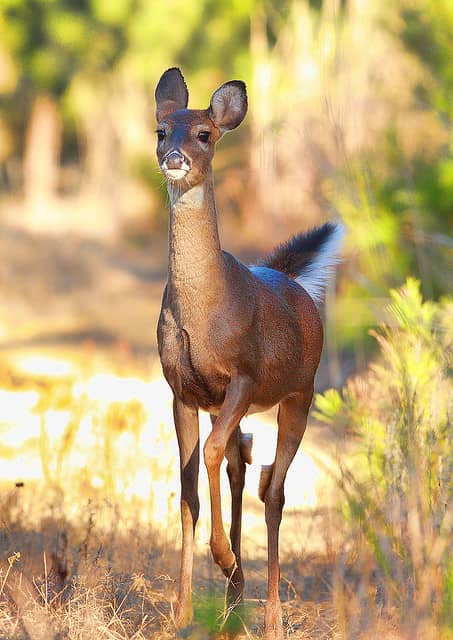Hemorrhagic Disease Outbreak in Western North Carolina Deer Herd
Moose Droppings 09.24.12

An outbreak of hemorrhagic disease in western North Carolina is killing a lot of the deer herd and has a lot of people concerned. As part of the regular public hearings schedule, the NCWRC added an informational meeting about the outbreak at this evenings meeting in Wilkesboro.
N.C. Wildlife Resources Commission biologists are observing an increasing number of hemorrhagic disease (HD) cases in white-tailed deer in the western part of the state, especially in Caldwell, Wilkes and Surry counties.
The disease has no human health implications, but is one of the most significant endemic viral and sometimes fatal diseases of white-tailed deer in the southeastern U.S.
Transported by a biting midge (or gnat), the virus enters deer through the blood stream. Common symptoms of sick animals include emaciation, loss of motor control, fever, lameness, and swelling of the neck and head. Feverish deer often seek relief near cool bodies of water, resulting in a higher frequency of dead deer near water than on adjacent uplands. Investigations of dead deer usually reveal ulcerations on the tongue, dental pad and palate of the mouth. The mouth may also be bluish in color and the skin flush or reddish, particularly noticeable on the inside of the legs and stomach.
Commission biologists first began seeing deer afflicted with the disease in Wilkes and Surry counties. In August, reports of the disease also began coming from Caldwell, Burke, McDowell, Rutherford and Buncombe counties. The hardest hit counties are Caldwell, Surry and Wilkes.
“Most cases of hemorrhagic disease are diagnosed by biologists in the field based on examination of recently deceased deer or living deer that appear sick and have no other outward signs of injury,” said Daniel Ray, a biologist with the Commission. “Dead or dying deer infected with HD are often found near rivers,streams, lakes or ponds.
There are no human or domestic pet-related health concerns from this virus. None of us can get it.”
The video is of a doe that has the disease and for some this may be a bit disturbing but gives you an idea of what a deer with it might look like and act like.
httpv://youtu.be/t_dBMaO1wd8
A killing frost can’t get here fast enough…. once it gets cold the mites will die and the outbreak will cease. How long it will take the deer herd in that area to recover? It could be a number of years. We had an outbreak a number of years ago in one of the areas I hunt and seemed like it killed off 75% of the deer. We are now just getting back to seeing deer in the numbers we saw them prior to the outbreak. A tough situation in the western part of the state.

